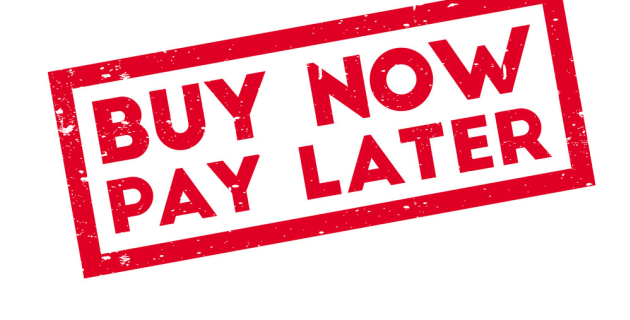#26 How do Buy-Now-Pay-Later (BNPL) companies make money?
Micro loans at point of sale nudging the customers to make the purchase
Hi there! If you find the newsletter content valuable, I would really (really!) appreciate it if you could share the newsletter with your network. It’s easy - You can click here to tweet about it. If you stumbled across this directly, you can find the previous editions here and subscribe to receive a weekly copy in your mailbox!
Buy Now Pay Later (BNPL)
Buy Now Pay Later companies refers to companies such as Affirm, Klarna, Afterpay, Hoolah, and Split who offer their customers repayment plans that allow them to receive their purchase straight away (Buy Now), either online or instore and then Pay Later.

Unlike Credit Cards, where you pay a bill at the end of the month, the BNPL option allows you to pay in installments. In general, this works by entering customers into a contract that obligates them to make payments of both principal and interest in the future, much like a traditional loan.
One way to visualize it is - Micro Loans at the Point of Sale (online or offline).
Benefits for Customers
The possibility to take home the product even if you don't have enough money to purchase it at that moment
Smaller, manageable repayments
Simple sign-up and almost instant assessment (much simpler and quicker than getting a credit card)
Benefits for Merchants
Increased conversion
Increased average transaction value
Comparatively easy integration
No Chargeback risk
How do BNPL Companies make money?
From Sellers
Merchants usually pay a BNPL charge ranging from 2 to 8 percent of the purchase amount. Some providers also charge a flat fee of 30 cents per transaction.
BNPL companies, like the Credit Card issuers, pay the vendors in full and then recover money from the customers. For vendors, BNPL is an alternative payment method (others including Credit & Debit Cards/Wallets/COD) and thus incurs a transaction fee. However, a rate of 2 to 8 percent is higher than a typical credit-card discount rate, which is usually around 2.9 percent plus 30 cents for card-not-present transactions (e-commerce) and about 1 percent less for card-present purchases (in-store).
BNPL providers position their service offering as a promotion/marketing spend given that the seller is able to increase traffic & conversion.
When you put it in the context that the average retail business has a 3.2% profit margin, then you realize that this is a significant hit to their profitability. A simple solution would be to add a surcharge to use these services. However, the BNPL providers get retailers to sign agreements that prevent them from passing on surcharges to customers.
From Consumers (Buyers)
Most third-party BNPL providers do a soft credit check to avoid giving money to people who have shown general disregard for repaying obligations, but this isn’t universal. Some BNPL providers monetize from consumers, here’s how:
Interest: Some providers like Affirm charge consumers an interest of 10-30% on the “loan” amount, based on the customer’s credit and the duration of repayment. Many BNPL providers like Hoolah & Split do not charge any interest rate as long as you pay the installments in time.
Late Fees: In 2019, Afterpay reported $18.2m in late fees, which is 17% of its total revenue. They count on you missing payments. Affirm, on the other hand, does not charge any hidden or late payment fees.
Final Takeaway
While Buy Now, Pay Later concept isn’t exactly new, the current incarnation is relatively recent. Functioning in a way similar to short-term loans with flexible repayment options, customers on the fence about a purchase can find the motivation necessary to click “Buy” with the lure of low payments.
While there’s a cost to merchants — usually around 2%–8% of the purchase price — many options are completely free for customers to use, creating a winning situation that can erase any doubts about spending money on a must-have or an impulse buy.
Hope you like the newsletter content! For more such content, follow me on Twitter.
If you stumbled across this post and would like to receive a weekly article about innovative business models, you can subscribe to this newsletter by dropping your email here.




Still open queries -1. how does the money flow work, when a product is returned to a merchant? The Fintech has already paid the merchant..what if it's returned when some amt already paid by customer to Fintech? 2. As it's open to all - those who dont have a credit score (the majority in India) - how is credit eval of intent to pay, done? Thanks for the clear article!